Why the Diamondbacks could make a playoff push this year
With the season approaching, the Diamondbacks carry an undeniable air of optimism. They’re young, talented, fast and exciting. The overall mood at Chase Field is better than it’s been in years after a 22-win leap to 74-88 last season.
But external projections still suggest caution is warranted. According to DraftKings, they’re still +550 to make the playoffs. Fangraphs has them projected for a modest improvement, at 77-85. Even general manager Mike Hazen offered muted expectations, saying a successful season would be playing meaningful games in September.
This is how they could surpass that ambition. For a dose of pessimism, we’ve got you covered here.
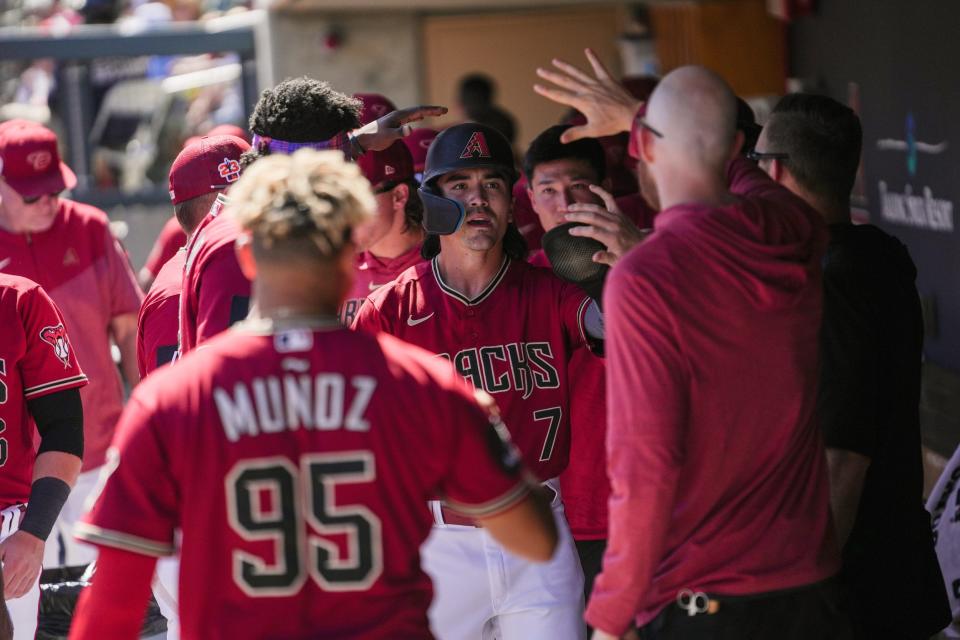
Diamondbacks youth movement
Envisioning how everything comes together for the Diamondbacks begins with their young offensive core, a group that might be the most exciting in the sport.
The headliner is Corbin Carroll, a talent so precocious that the team inked him to an eight-year, $111 million extension this month despite only having 32 games of major league experience. In those 32 games, he slashed .260/.330/.500, displayed elite defense in left field and recorded the fastest sprint speed in baseball. A full season of Carroll, who Baseball America ranks as the sport’s No. 2 prospect, instantly provides the Diamondbacks’ with a threat atop the lineup that they missed in 2022.
But Carroll isn’t alone.
Alek Thomas, also just 22, was an elite defensive centerfielder last year, ranking in the 92nd percentile in Statcast’s Outs Above Average metric. After a hot start offensively, he fizzled out thanks to an overly aggressive approach, but his numbers across four minor league seasons indicate he can be an impact bat and live up to his billing as the sport’s No. 18 prospect prior to his debut.
Right fielder Jake McCarthy, 25, didn’t have that same hype as a prospect, but he made waves after his promotion in July. From then until the end of the season, he had a .795 OPS and stole 22 bases. In total, he was worth 2.4 wins in just 99 games, according to Baseball Reference. Plus, McCarthy should benefit more than anyone else on the team from the banning of the overshift. His wOBA, which measures overall offensive value and is scaled to match on-base percentage, was .066 higher when not being shifted against.
That outfield trio played a key role over the second half of last year, when the Diamondbacks played over .500 for prolonged stretches and finished at 34-36.
Now, they’re joined by 23-year-old catcher Gabriel Moreno, whom the Diamondbacks received as part of a package for Daulton Varsho in the off-season. Moreno was a top-10 prospect before last season, when he hit .319 with a .733 OPS for the Blue Jays. He is considered an above-average defensive backstop with an elite hit tool and untapped power.
Last year, all four of these young talents were finding their footing in the majors. This year, they have the potential to develop into foundational players. In an ideal scenario, one or two would make the leap to stardom.
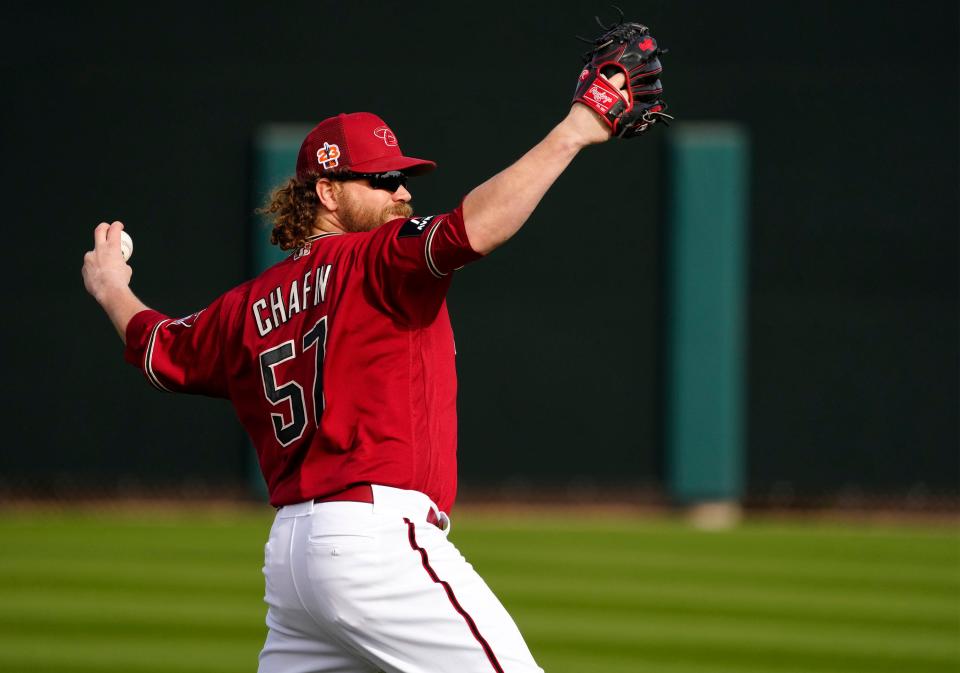
The Diamondbacks bullpen can't be worse
The Diamondbacks’ 2022 bullpen tied a major-league record for losses. Their winning percentage (.615) when leading or tied after five innings was the worst in the sport. In other words, it almost has to be better.
For one, the worst offenders from last year are gone. Ian Kennedy, Noé Ramirez and J.B. Wendelken, who combined for a 5.29 ERA in 129 1/3 IP, are no longer in the organization. Ill-fated experiments like Oliver Pérez and Luke Weaver came and went. And Mark Melancon, who pitched to a 4.66 ERA and lost the closer’s role, is expected to miss at least half the season with a shoulder injury.
In their stead is a bullpen that lacks star power but offers a road map to competency.
The returners are Joe Mantiply, Kyle Nelson and Kevin Ginkel, a group that had a cumulative 2.78 ERA in 126 1/3 IP. Thanks to a microscopic 0.90 walks per nine innings, Mantiply has the best projections for this year. Ginkel had an impressive 9.2 strikeouts per nine, while Nelson’s success appeared a bit more tenuous but was still backed up by a 3.14 FIP (fielding-independent pitching).
The standout addition is Andrew Chafin, who has an ERA of 2.29 across the past two seasons. His expected numbers indicate an ERA in the low-3s is more likely, but even that is a valuable back-end piece. He’s joined by Scott McGough, who had a 2.35 ERA in the hitter-friendly Japanese league. Miguel Castro offers a 100 mph fastball that the Diamondbacks lacked as an option last year.
The fact that manager Torey Lovullo will enter the season without a defined closer hints at the lack of standout weapons from this group, but even the 20th-ranked bullpen was worth 3.2 more wins than the Diamondbacks’ last-place unit a year ago, per FanGraphs. That’s a reasonable baseline.
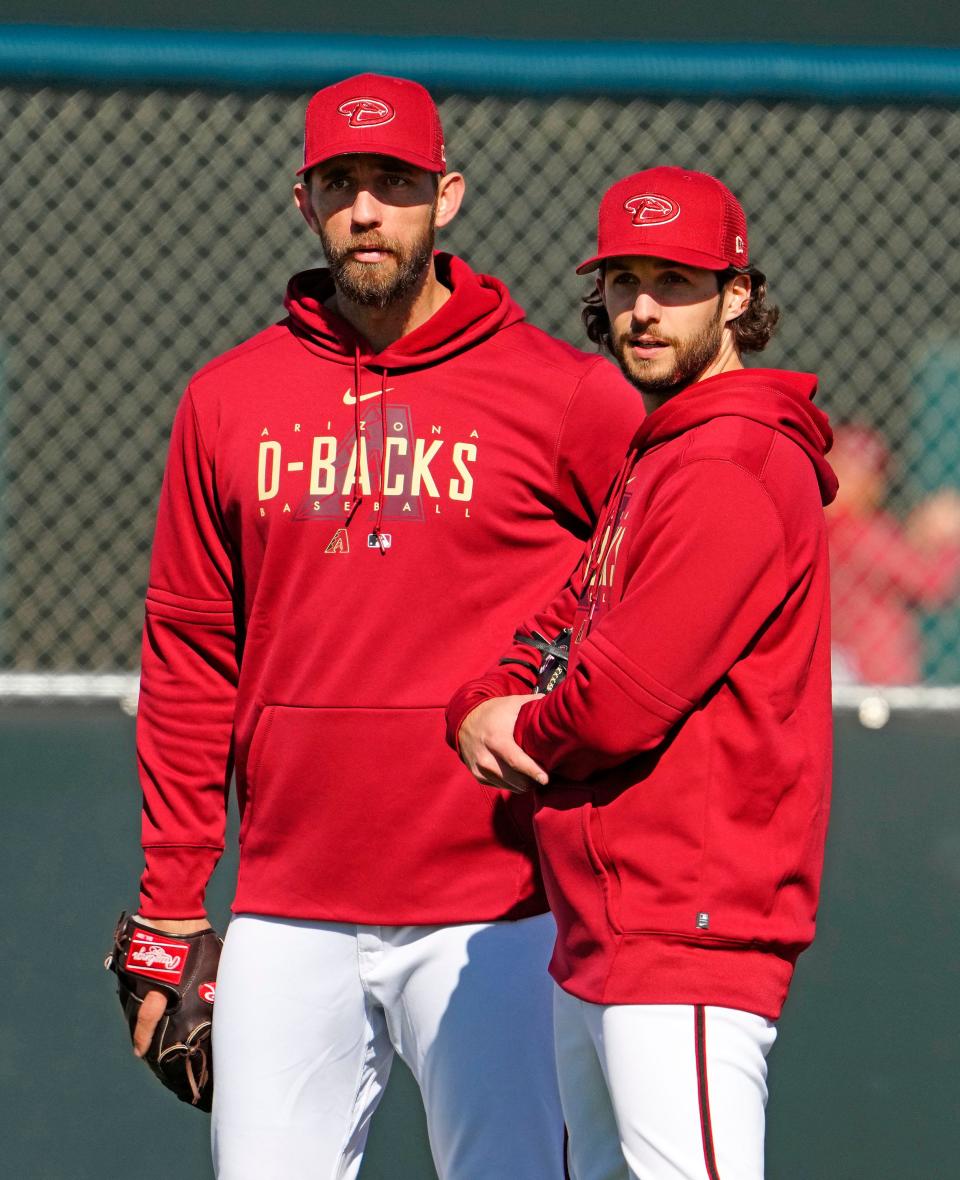
Diamondbacks should have a more complete rotation
In September, the Diamondbacks called up Ryne Nelson and Drey Jameson, signaling the beginning of a youth movement in their rotation. It also offered a miniature blueprint for one reason why this year could be different.
Before Nelson and Jameson debuted, the Diamondbacks went 12-26 in games not started by Zac Gallen, Merrill Kelly, Zach Davies or Madison Bumgarner. That wasn’t by accident. They didn’t expect to compete in 2022, so they didn’t fill out their rotation with a legitimate fifth starter. Eight pitchers started in that rotating door of a spot. None were good.
This year, that role will be occupied to begin the season by either Nelson or Jameson, who posted ERAs of 1.47 and 1.48, respectively, in their brief cameos. While those numbers aren’t replicable over a full season, both are considered legitimate major league prospects with a mid-rotation ceiling. Just behind them is Brandon Pfaadt, who is widely seen as having the best future of the group. Pfaadt struck out 11.7 batters per nine across Double-A and Triple-A and was ranked as Baseball America’s No. 27 prospect.
That trio also gives the Diamondbacks a viable out should Bumgarner struggle again.
Over his last 10 starts, Bumgarner posted a 7.12 ERA. On the season, he had a whiff rate in the fourth percentile league-wide, a fastball velocity in the seventh percentile and an average exit velocity in the ninth percentile. In his 30 starts, the Diamondbacks went 12-18. Add that to the fifth starters and that’s a 24-44 record without Gallen, Kelly, Davies or the two rookies.
Even if they hit some natural speed bumps in their development, the club’s young pitchers should lessen that drop-off to the back end of the rotation.
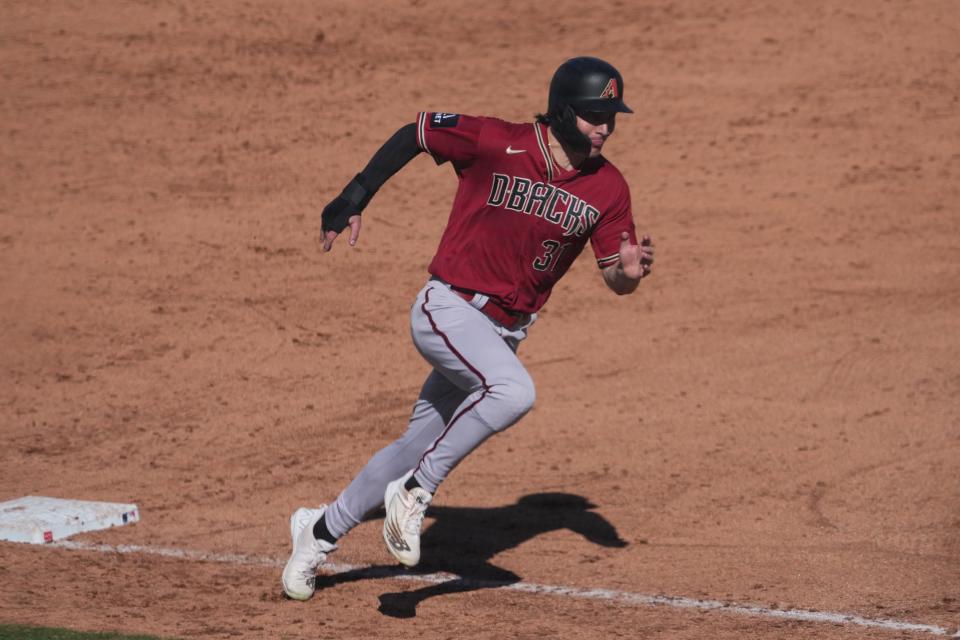
These Diamondbacks are built for speed
Baseball’s new rules, namely the introduction of the pitch clock, should have a significant impact on base-stealing. In the first two weeks of spring training, stolen base attempts were up more than 50%, while the success rate leapt from 73.2% to 80.8%.
There might not be a team better prepared to take advantage of those rules. After the All-Star Break, the Diamondbacks led baseball with 68 steals, doing so at a success rate of 80.9%.
That coincided with the promotion of McCarthy, who used his 98th-percentile speed to nab 23 bags. Third baseman Josh Rojas only has average speed but is one of the sport’s most intelligent baserunners, helping him to 23 steals as well. And then there’s Carroll, who only stole two bases in his major league cameo but has 52 steals in 142 career minor league games. Thomas has never posted gaudy stolen base numbers, but he also has 95th-percentile speed.
Under the new rules, that group will be a nightmare for opposing batteries.
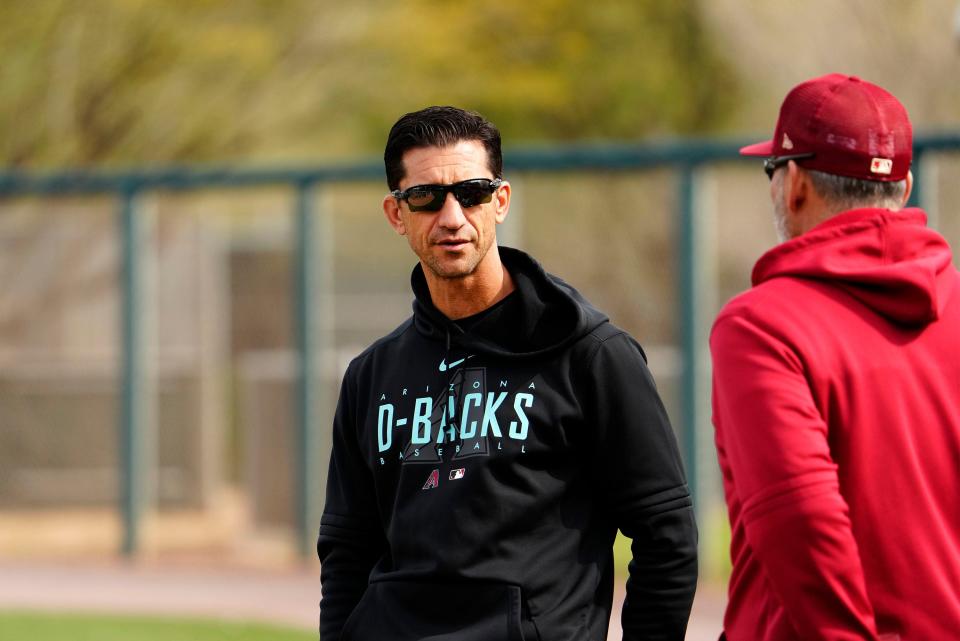
Finally, expect a more balanced lineup from Diamondbacks
Last year, the Diamondbacks had a team OPS of .703 against right-handed pitchers, compared to .655 against lefties. The former is league average — in line with playoff teams like Cleveland and Tampa Bay. The latter is 16% below league average — in line with bottom feeders like Pittsburgh and Detroit.
The root cause of that discrepancy is that the Diamondbacks have a lefty-heavy lineup. But because they weren’t expecting to compete, they didn’t complement that group with Major League caliber righties in 2022. Instead, they filled out their roster with below replacement-level players like Sergio Alcántara, Drew Ellis and Jordan Luplow.
This year, Hazen’s roster construction was far more deliberate. In the infield, he signed Evan Longoria to platoon with the left-handed Rojas at third. In the outfield, he traded for Lourdes Gurriel Jr. (in the Moreno deal) to give the club a right-handed option behind three lefty starters.
Both players hit lefties well, have a history of recent success and have above-average batted ball data. They make the Diamondbacks bench better, while also giving Lovullo more ways to line up against left-handed starters and mitigate last year’s splits. If outfielder Kyle Lewis, acquired via trade from Seattle, can stay healthy and get back to his 2019-20 form, he’ll be another option of the same ilk.
This article originally appeared on Arizona Republic: Youth, speed, rotation all factors why Diamondbacks could surprise

